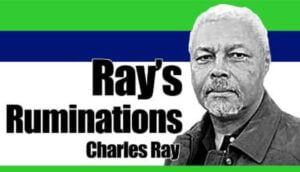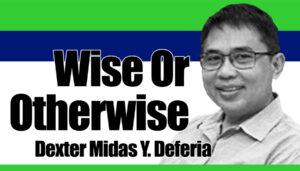- PENN T. LARENA
Cemeteries are rich sources of heritage, archival records, and history that should be preserved for future generations.
Negros Island cemeteries are a great way to learn more about the mausoleum architecture, and the secret stories of prominent clans in Negros.
Cemeteries are also resources of different styles of architectural design, as shown in the elaborate tombs and mausoleums. Although some of the rich families transferred the remains of their loved ones to modern cemeteries in the city, some of the mausoleums are still left intact.
My love of doing cementerio research was due to the encouragement of my late friend and fellow heritage advocate, Dex Larida, famous blogger and a certified taphophile – a lover of old churches and ancestral houses in the Philippines. He also did awareness and preservation through “Sementeryo: Heritage Cemeteries of the Philippines during the Spanish and American Regime”.

The Luzuriaga family mausoleum was established during the pre-war period, in honor of the late Negros Occidental governor Jose Ruiz de Luzuriaga.
Listed in the Guinness Book of World Records, the only cemetery in the middle of two intersections is located at Lopez-Jaena and Burgos streets in Bacolod City.
Negrense historian Solomon Lopez Locsin said the Locsin Mausoleum in Silay City was built for spouses Don Vicente and Teodora Montelibano as their final resting place. They were the first to be buried there. It also eventually became the final resting place of the family of Sen. Jose C. Locsin, who was married to the couple’s daughter, Salvacion. The structure was built by Oriol de Manila (Oriol Marble Works), a renowned pre-war contractor of, among other things, tombs for prominent families.
The heritage cemetery of Bago City, Negros Occidental, was established in the first half of the 19th century. The cemetery has an intact brick arch, primitive perimeter fence remnants, and some old tombs. The brick arch is so small that, as you can see, a tricycle can barely fit in.
Bais City’s second oldest and first family private cemetery in Negros was established in 1916, with the death of the first civil governor and local hero, Demetrio Larena. It was originally called Cementerio de Katacgahan, now the Larena family cemetery. The family was not allowed to be buried in Catholic burial grounds they were of Protestants and Freemasons family.
The Villegas private cemetery in Vallehermoso Negros Oriental is where the remains of Don Espiridion Villegas, a local hero, were buried. On account of his Freemason membership, he decided to establish a family cemetery in his estate. According to the family historian, Franco Villegas, most of the remains of family members were also buried there and after the 1960s, the family opened its door to the public.
The Villanueva Familia Cemetery in Talungon, Bais City, was established in 1925 when the family was faithful in support of the Aglipayan Movement that overthrew Roman Catholicism in the city for 12 years. When the American rule came to Negros, the family converted to Protestantism. This historic cemetery was the burial ground of a prominent personality in the world of politics and is a living testament of faith, service, and dedication.
The American Cemetery of Dumaguete was established as part of the American Masonic Cemetery in 1907. It was expanded in 1922. The area is the gravesite of American missionaries and teachers, and is an adopted place of the Boy Scouts and Knights of Rizal.
Kalag-Kalag is a Negrosanon tradition on how we treat the dead that reflects the values and norms we hold as a society. These are not just religious values or beliefs, but the respect and values we pass on to the next generations to remember our ancestors. – NWI




